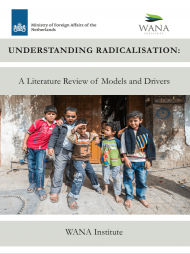-
Understanding Radicalisation: A Literature Review of ...
Understanding Radicalisation: A Literature Review of Models and Drivers
Interest in the drivers of, and models to explain, the processes of radicalisation has increased exponentially since the terrorist attacks of 11 September 2001. Attention has focused on the West Asia-North Africa (WANA) region due to the expansion and reach of armed radical groups, manifesting in acts of violence both domestically and aboard. Within the radicalisation debate, scholars and practitioners have wrestled to understand the ideologies that inspire, the members of self-described ‘Islamic’ armed groups and other causal drivers, be they social, economic, or reactionary.

